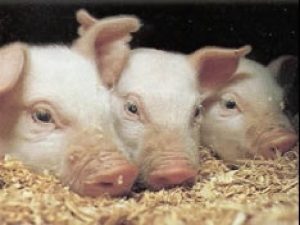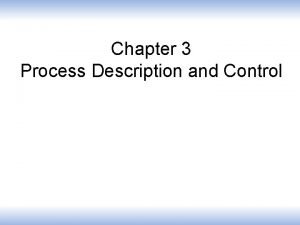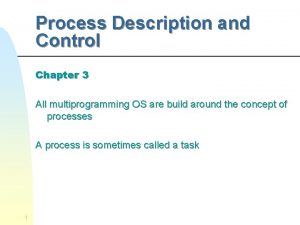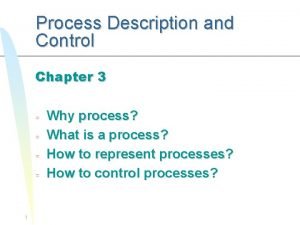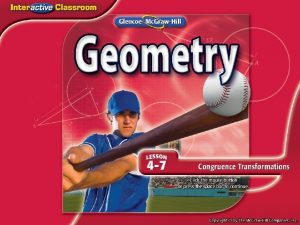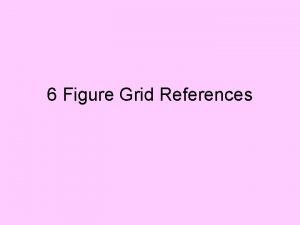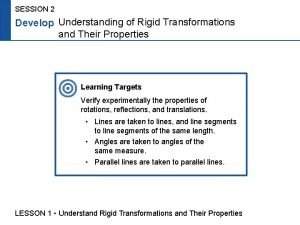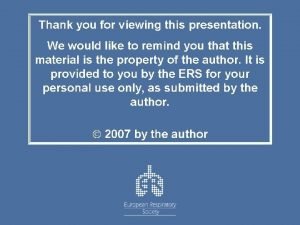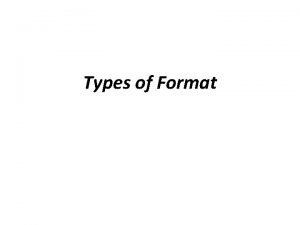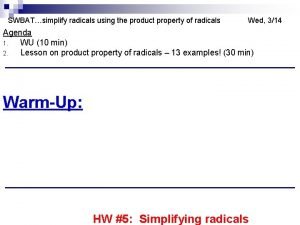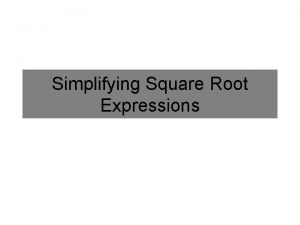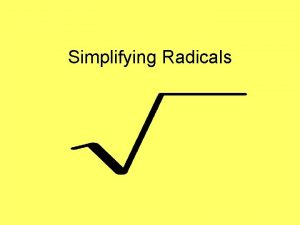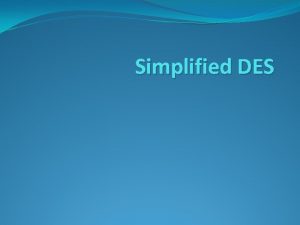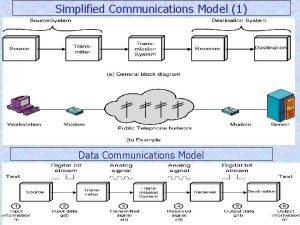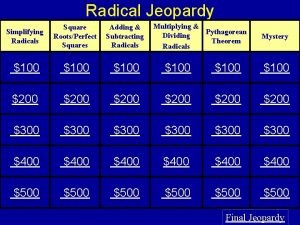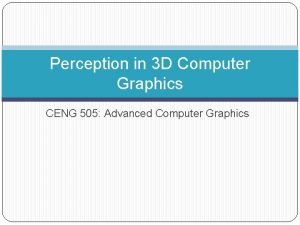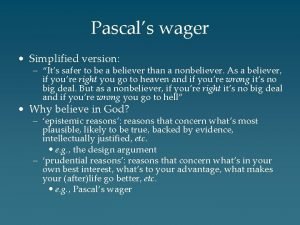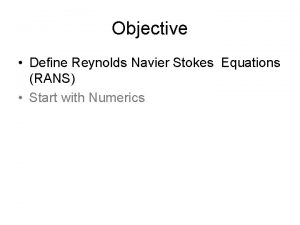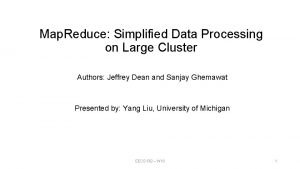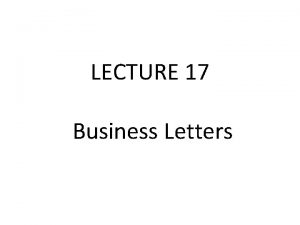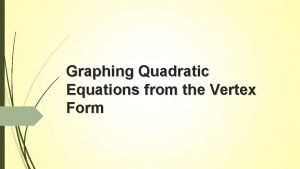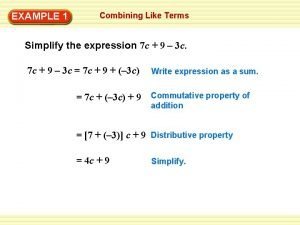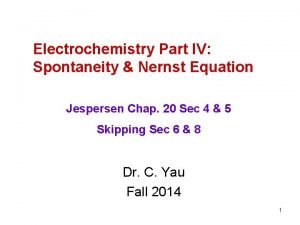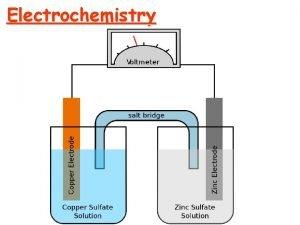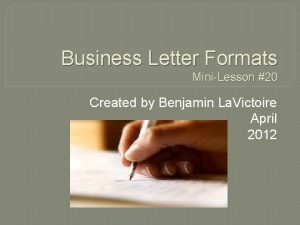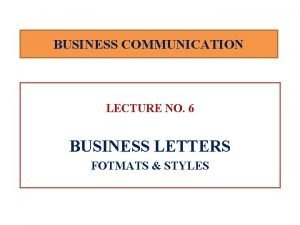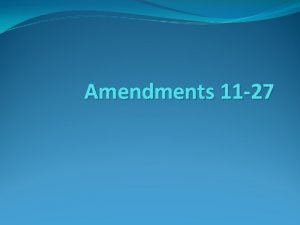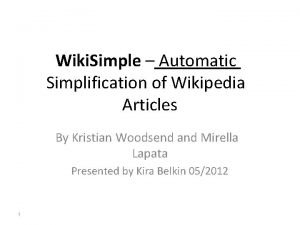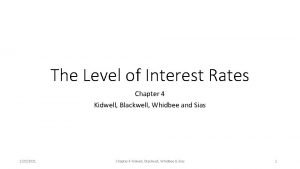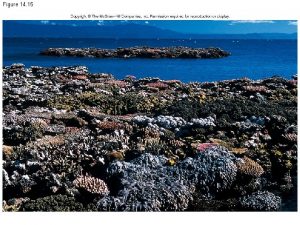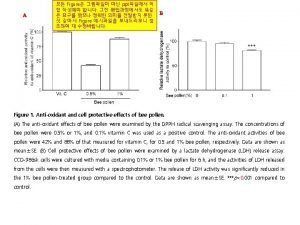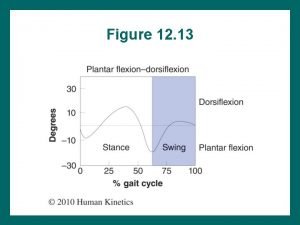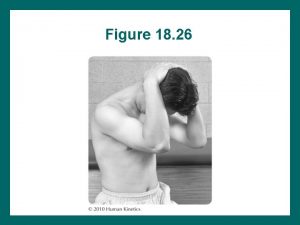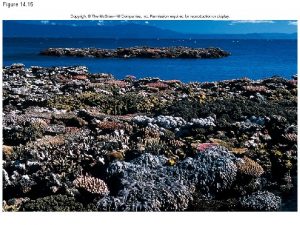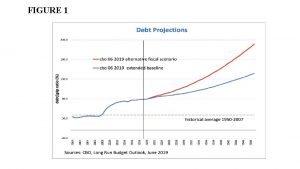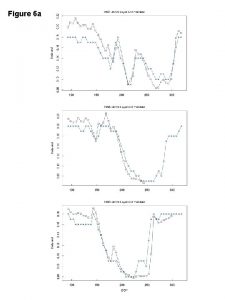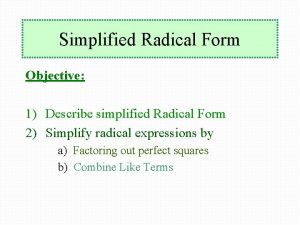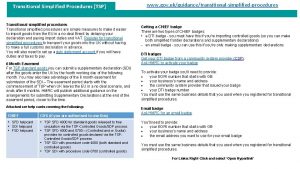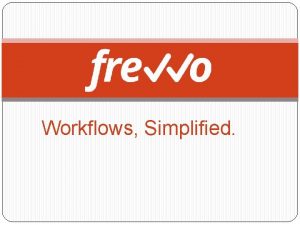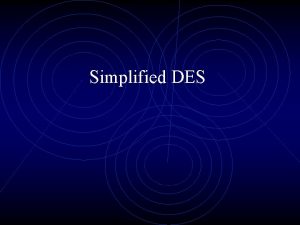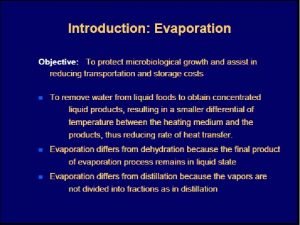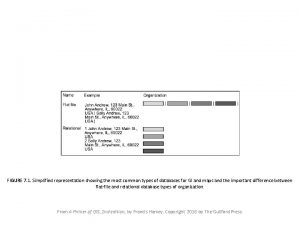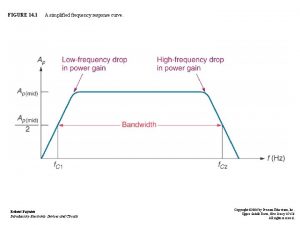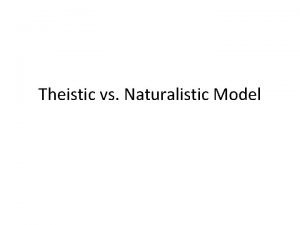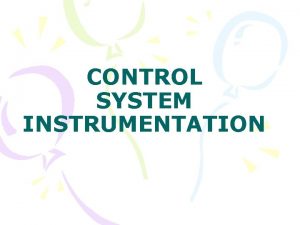Figure 1 1 Simplified description of a control







































- Slides: 39

Figure 1. 1 Simplified description of a control system Control Systems Engineering, Fourth Edition by Norman S. Nise Copyright © 2004 by John Wiley & Sons. All rights reserved.

Figure 1. 5 Elevator input and output Control Systems Engineering, Fourth Edition by Norman S. Nise Copyright © 2004 by John Wiley & Sons. All rights reserved.

Figure 1. 6 Block diagrams of control systems: a. open-loop system; b. closed-loop system Control Systems Engineering, Fourth Edition by Norman S. Nise Copyright © 2004 by John Wiley & Sons. All rights reserved.

Figure 1. 11 The control system design process Control Systems Engineering, Fourth Edition by Norman S. Nise Copyright © 2004 by John Wiley & Sons. All rights reserved.

Figure 1. 9 Antenna azimuth position control system: a. system concept; b. detailed layout; c. schematic; d. functional block diagram Control Systems Engineering, Fourth Edition by Norman S. Nise Copyright © 2004 by John Wiley & Sons. All rights reserved.

Figure 1. 10 Response of a position control system showing effect of high and low controller gain on the output response Control Systems Engineering, Fourth Edition by Norman S. Nise Copyright © 2004 by John Wiley & Sons. All rights reserved.

Figure 1. 12 Equivalent block diagram for the antenna azimuth position control system Control Systems Engineering, Fourth Edition by Norman S. Nise Copyright © 2004 by John Wiley & Sons. All rights reserved.

Table 1. 1 Test waveforms used in control systems Control Systems Engineering, Fourth Edition by Norman S. Nise Copyright © 2004 by John Wiley & Sons. All rights reserved.

Modeling In order to systematically design a controller for a particular system, one needs a formal - though possibly simple - description of the system. Such a description is called a model. A model is a set of mathematical equations that are intended to capture the effect of certain system variables on certain other system variables. Control Systems Engineering, Fourth Edition by Norman S. Nise Copyright © 2004 by John Wiley & Sons. All rights reserved.

Modeling Models are classified according to properties of the equation they are based on. Examples of classification include: In many situations nonlinear models can be linearized around a user defined operating point. Control Systems Engineering, Fourth Edition by Norman S. Nise Copyright © 2004 by John Wiley & Sons. All rights reserved.

Figure 2. 1 a. Block diagram representation of a system; b. block diagram representation of an interconnection of subsystems Control Systems Engineering, Fourth Edition by Norman S. Nise Copyright © 2004 by John Wiley & Sons. All rights reserved.

Modeling in Frequency Domain Transfer Function Control Systems Engineering, Fourth Edition by Norman S. Nise Copyright © 2004 by John Wiley & Sons. All rights reserved.

Transfer Function is the ratio of output to input in frequency domain G(s) = C(s)/R(s) Figure 2. 2 Block diagram of a transfer function Control Systems Engineering, Fourth Edition by Norman S. Nise Copyright © 2004 by John Wiley & Sons. All rights reserved.

Table 2. 1 Laplace transform table Control Systems Engineering, Fourth Edition by Norman S. Nise Copyright © 2004 by John Wiley & Sons. All rights reserved.

Table 2. 2 Laplace transform theorems Control Systems Engineering, Fourth Edition by Norman S. Nise Copyright © 2004 by John Wiley & Sons. All rights reserved.

Examples 1) Find the transfer function represented by dc(t)/dt + 2 c(t) = r(t) Sol’n Taking Laplace transform of both sides s. C(s) + 2 C(s) = R(s) G(s) = C(s)/R(s) = 1/(s+2) 2) Find the response c(t) to an input r(t) = u(t) a unit step. Sol’n C(s) = R(s)G(s) = 1/s(s+2) = 0. 5/s – 0. 5/(s+2) Inverse Laplace c(t) = 1/2 – 1/2 e-2 t Control Systems Engineering, Fourth Edition by Norman S. Nise Copyright © 2004 by John Wiley & Sons. All rights reserved.

Table 2. 3 Voltage-current, voltage-charge, and impedance relationships for capacitors, resistors, and inductors Component V-I I-V V-Q Impedence Admittance Z(s)=V/I Y(s) = I/V Control Systems Engineering, Fourth Edition by Norman S. Nise Copyright © 2004 by John Wiley & Sons. All rights reserved.

L di(t)/dt + Ri(t) + 1/C ∫i(τ) dτ = v(t) Figure 2. 3 RLC network Control Systems Engineering, Fourth Edition by Norman S. Nise Copyright © 2004 by John Wiley & Sons. All rights reserved.

Find Vc(s)/V(s) (Ls+R+1/Cs) I(s) = V(s) Vc(s) = I(s)/ Cs Vc(s)/V(s) = (1/LC) / (s 2+ (R/L)s+ 1/LC) Figure 2. 5 Laplace-transformed network Control Systems Engineering, Fourth Edition by Norman S. Nise Copyright © 2004 by John Wiley & Sons. All rights reserved.

Figure 2. 4 Block diagram of series RLC electrical network Control Systems Engineering, Fourth Edition by Norman S. Nise Copyright © 2004 by John Wiley & Sons. All rights reserved.

Figure 2. 6 a. Two-loop electrical network; b. transformed two-loop electrical network; c. block diagram Control Systems Engineering, Fourth Edition by Norman S. Nise Copyright © 2004 by John Wiley & Sons. All rights reserved.

Figure 2. 7 Block diagram of the network of Figure 2. 6 Let G 1= 1/R 1 and G 2= 1/R 2 Control Systems Engineering, Fourth Edition by Norman S. Nise Copyright © 2004 by John Wiley & Sons. All rights reserved.

Figure 2. 8 Transformed network ready for nodal analysis Control Systems Engineering, Fourth Edition by Norman S. Nise Copyright © 2004 by John Wiley & Sons. All rights reserved.

Figure 2. 9 Three-loop electrical network Control Systems Engineering, Fourth Edition by Norman S. Nise Copyright © 2004 by John Wiley & Sons. All rights reserved.

Table 2. 4 Force-velocity, forcedisplacement, and impedance translational relationships for springs, viscous dampers, and mass Translational Mechanical Systems Control Systems Engineering, Fourth Edition by Norman S. Nise Copyright © 2004 by John Wiley & Sons. All rights reserved.

Figure 2. 15 a. Mass, spring, and damper system; b. block diagram Control Systems Engineering, Fourth Edition by Norman S. Nise Copyright © 2004 by John Wiley & Sons. All rights reserved.

Figure 2. 16 a. Free-body diagram of mass, spring, and damper system; b. transformed free-body diagram Control Systems Engineering, Fourth Edition by Norman S. Nise Copyright © 2004 by John Wiley & Sons. All rights reserved.

Figure 2. 17 a. Two-degrees-of-freedom translational mechanical system 8; b. block diagram Control Systems Engineering, Fourth Edition by Norman S. Nise Copyright © 2004 by John Wiley & Sons. All rights reserved.

Figure 2. 20 Three-degrees-of-freedom translational mechanical system Control Systems Engineering, Fourth Edition by Norman S. Nise Copyright © 2004 by John Wiley & Sons. All rights reserved.

Table 2. 5 Torque-angular velocity, torque-angular displacement, and impedance rotational relationships for springs, viscous dampers, and inertia Rotational Mechanical Systems Control Systems Engineering, Fourth Edition by Norman S. Nise Copyright © 2004 by John Wiley & Sons. All rights reserved.

Figure 2. 22 a. Physical system; b. schematic; c. block diagram Control Systems Engineering, Fourth Edition by Norman S. Nise Copyright © 2004 by John Wiley & Sons. All rights reserved.

Figure 2. 25 Three-degrees-offreedom rotational system Control Systems Engineering, Fourth Edition by Norman S. Nise Copyright © 2004 by John Wiley & Sons. All rights reserved.

Figure 2. 35 DC motor: a. schematic 12; b. block diagram Control Systems Engineering, Fourth Edition by Norman S. Nise Copyright © 2004 by John Wiley & Sons. All rights reserved.

Figure 2. 41 Development of series analog: a. mechanical system; b. desired electrical representation; c. series analog; d. parameters for series analog Control Systems Engineering, Fourth Edition by Norman S. Nise Copyright © 2004 by John Wiley & Sons. All rights reserved.

Figure 2. 42 Series analog of mechanical system of Figure 2. 17(a) Control Systems Engineering, Fourth Edition by Norman S. Nise Copyright © 2004 by John Wiley & Sons. All rights reserved.

Figure 2. 43 Development of parallel analog: a. mechanical system; b. desired electrical representation; c. parallel analog; d. parameters for parallel analog Control Systems Engineering, Fourth Edition by Norman S. Nise Copyright © 2004 by John Wiley & Sons. All rights reserved.

Figure 2. 44 Parallel analog of mechanical system of Figure 2. 17(a)

Figure 2. 45 a. Linear system; b. nonlinear system Control Systems Engineering, Fourth Edition by Norman S. Nise Copyright © 2004 by John Wiley & Sons. All rights reserved.

Figure 2. 46 Some physical nonlinearities Control Systems Engineering, Fourth Edition by Norman S. Nise Copyright © 2004 by John Wiley & Sons. All rights reserved.
 Allergen description control ctrl
Allergen description control ctrl What is a process description
What is a process description Process description and control
Process description and control Process description and control
Process description and control An operation that maps an original geometric figure
An operation that maps an original geometric figure 4 figure and 6 figure grid references
4 figure and 6 figure grid references Abcye
Abcye Plane figures and solid figures
Plane figures and solid figures Simplified weaning index
Simplified weaning index Full block letter
Full block letter Addition radicals examples
Addition radicals examples Square root 48 simplified
Square root 48 simplified Square root of 72 simplified
Square root of 72 simplified Simplify square root of 4/9
Simplify square root of 4/9 Simplify radical 108
Simplify radical 108 Simplified storage
Simplified storage Sic architecture
Sic architecture Sdes algorithm
Sdes algorithm Models of data communication
Models of data communication Radical 200 simplified
Radical 200 simplified Quick heal security simplified
Quick heal security simplified 42/72 simplified
42/72 simplified Pascal's wager simplified
Pascal's wager simplified What are redox reactions
What are redox reactions Navier stokes equation momentum
Navier stokes equation momentum Mapreduce: simplified data processing on large clusters
Mapreduce: simplified data processing on large clusters Ams letter format
Ams letter format Kahoot.itk
Kahoot.itk Homework for monday
Homework for monday Vertex form graph calculator
Vertex form graph calculator In math what is a constant
In math what is a constant Nernst equation for galvanic cell
Nernst equation for galvanic cell Nernst equation simplified
Nernst equation simplified Simplified format of business letter
Simplified format of business letter Simplified letter format
Simplified letter format Aecma simplified english
Aecma simplified english 16th amendment simplified
16th amendment simplified 105/7 simplified
105/7 simplified Simplified wikipedia
Simplified wikipedia Simplified fisher equation
Simplified fisher equation
